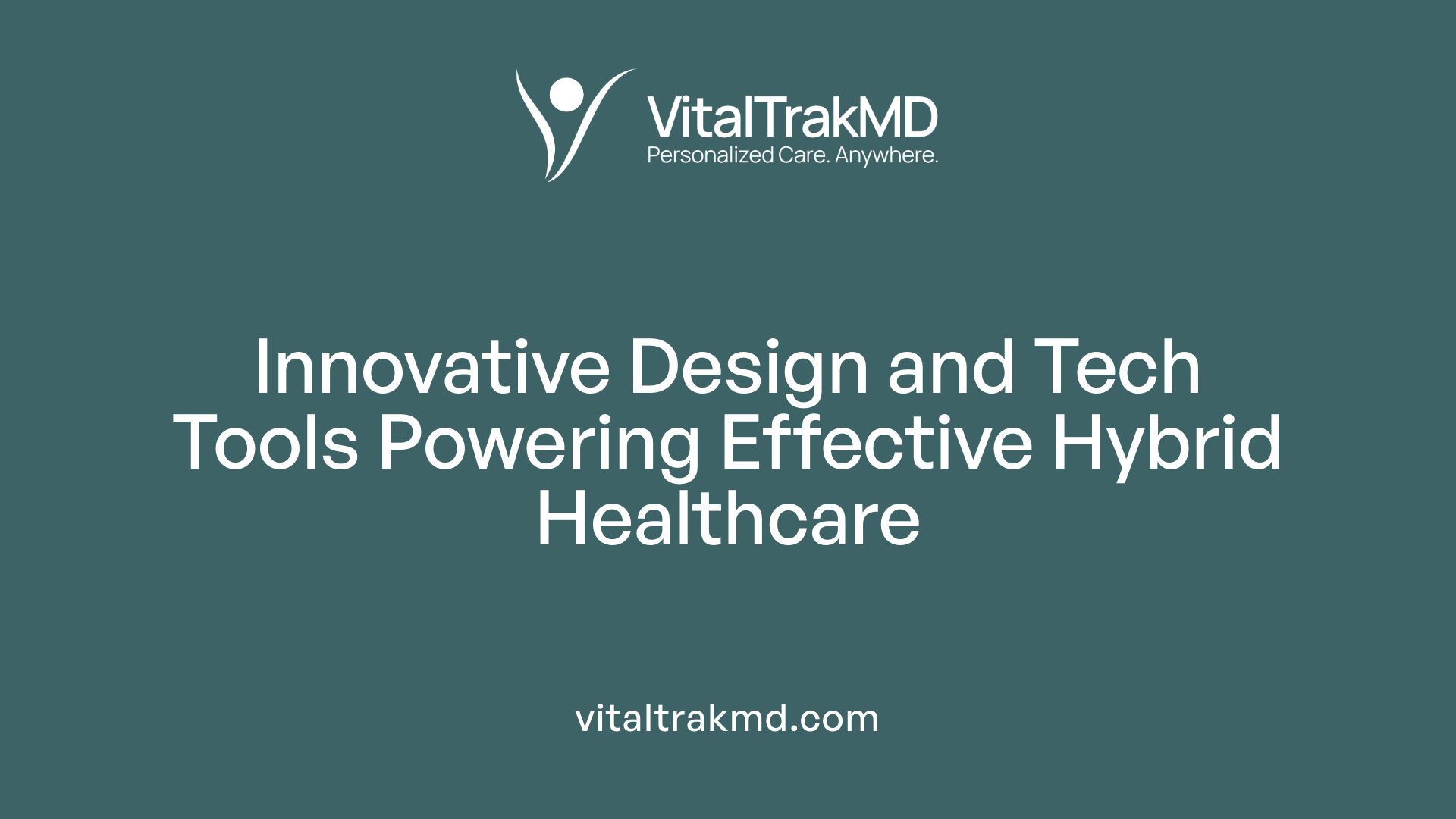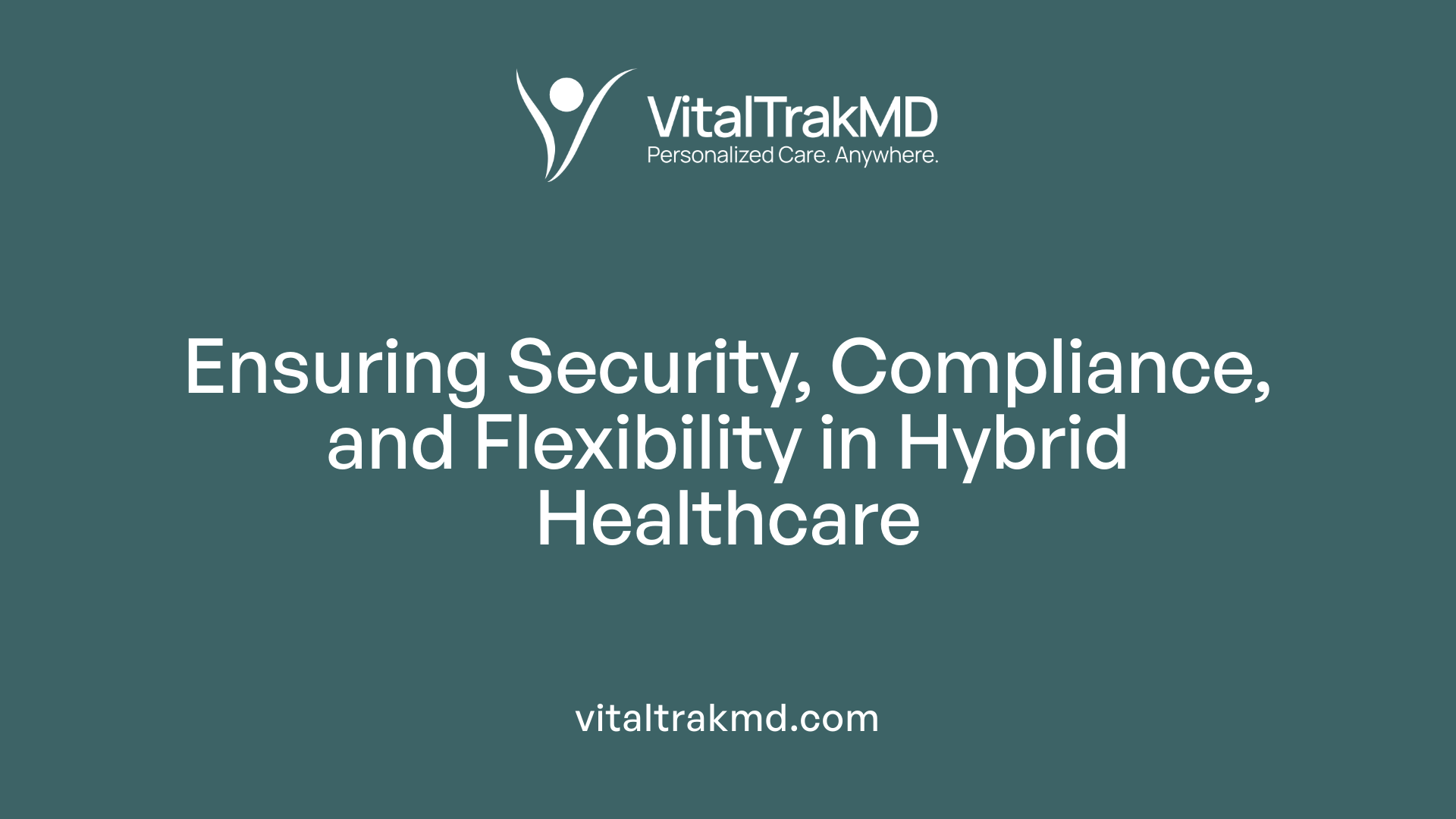Key Qualities to Look for in Top Hybrid Healthcare Services

The Evolution of Hybrid Healthcare
As healthcare continues to embrace technological innovation, hybrid care models have emerged as a transformative approach, blending in-person interactions with virtual solutions to enhance accessibility, efficiency, and patient satisfaction. To identify and develop top-tier hybrid healthcare services, it is vital to understand the core qualities and features that define excellence in this emerging field. This article explores the essential characteristics, design principles, and strategic benefits of robust hybrid care systems, providing a comprehensive guide for healthcare providers, administrators, and patients.
Core Qualities and Features of Effective Hybrid Healthcare Services
What are the core qualities and features that define effective hybrid healthcare services?
Effective hybrid healthcare services are built on the seamless integration of both in-person and virtual care modalities. This integration relies heavily on interoperable, secure, and reliable technology infrastructure that ensures smooth communication, data sharing, and coordination among care teams.
Patient-centeredness is at the heart of successful hybrid models. They focus on improving accessibility through remote monitoring devices, telehealth consultations, and digital engagement tools that accommodate individual preferences and needs.
Continuity of care across channels is crucial. This means maintaining consistent communication whether patients are visiting physically or engaging through virtual platforms. Designed workflows and clearly defined protocols for switching between care modes enable efficient and effective patient management.
Adherence to high-quality standards and ongoing improvement initiatives help sustain service excellence. Regular audits, benchmarking, and patient feedback collection support continuous quality enhancements.
For success, organizations must invest in well-trained providers, supportive leadership, and robust systems that address the technological, organizational, and patient-related challenges. Overall, adaptability, interoperability, comprehensive engagement, and ongoing quality control are the pillars that define high-performing hybrid healthcare services.
Characteristics and Standards of High-Quality Hybrid Healthcare Providers

What characteristics and standards should high-quality hybrid healthcare providers meet?
High-quality hybrid healthcare providers are distinguished by their ability to deliver seamless, efficient, and patient-centered care through a well-integrated system of in-person and virtual services. A foundational feature is the establishment of structured clinical workflows that smoothly connect face-to-face consultations with telehealth interactions. These workflows should be designed to optimize patient outcomes while maintaining flexibility to switch between care modes based on individual needs.
Adherence to clinical quality standards is essential. This involves setting clear benchmarks for health outcomes, patient satisfaction, and safety, and regularly monitoring these metrics through audits, feedback mechanisms, and outcome tracking tools. Continuous evaluation enables providers to identify areas for improvement, ensuring the delivery of high-quality services.
Security and compliance with technology standards are critically important. All digital tools, including telemedicine platforms, remote monitoring devices, and electronic health records (EHR), must be HIPAA-compliant and HITRUST-certified to safeguard patient information. Platforms should be accessible, supporting multiple languages and features accommodating patients with disabilities, thus promoting health equity.
Patient safety and privacy require rigorous protocols. This includes secure data transmission, regular security audits, and staff training on privacy practices. Protecting patient data not only preserves trust but also aligns with legal requirements.
Staff training and workflow management are linchpins of quality care. Healthcare professionals need comprehensive education on new technologies, digital documentation, and effective virtual communication. Workflow adjustments such as digital scheduling, check-in procedures, and care protocols must be standardized, efficient, and clearly communicated to all team members.
In summary, providers aiming for high standards should focus on integrated clinical workflows, adhere to clinical quality benchmarks, prioritize security and privacy, and invest in continuous staff training and workflow optimization. These elements combined foster a care environment capable of delivering safe, accessible, and effective hybrid healthcare.
Design Principles, Tools, and Technologies Supporting Hybrid Care

What are the key design, tools, and technological attributes that support effective hybrid healthcare models?
Supporting successful hybrid healthcare relies on a combination of thoughtful design, advanced tools, and sophisticated technology. These elements work together to ensure seamless integration of both in-person and remote care, enhancing patient outcomes and operational efficiency.
One fundamental design aspect is creating flexible hospital layouts. Modular environments enable spaces to be adaptable for virtual care activities, with designated zones for telehealth consultations and remote diagnostics. Dedicated telehealth rooms, equipped with high-quality audio-visual equipment, sturdy internet, and privacy measures, are essential for delivering secure, comfortable virtual visits.
Technological integration plays a vital role. Digital platforms that connect with Electronic Health Records (EHRs) streamline data sharing and documentation across care settings. These platforms often incorporate artificial intelligence (AI), real-time analytics, and decision support tools, enhancing clinical decision-making and personalized care.
Remote monitoring devices are integral to hybrid models. Examples include sensors that track vital signs, portable diagnostic tools, and wearable health trackers. These tools enable continuous patient monitoring outside traditional clinics, supporting early intervention and better management of chronic conditions.
Communication tools also are pivotal. Secure video conferencing solutions facilitate virtual consultations, while digital messaging, appointment scheduling, and remote check-ins maintain ongoing patient engagement. These tools need to be user-friendly for both providers and patients to encourage widespread use.
To sustain efficiency and incentivize comprehensive care, hybrid payment models are evolving. These often combine fee-for-service reimbursement with value-based and population health payments, supporting innovation while promoting high-quality, patient-centered services.
In summary, effective hybrid healthcare models depend on adaptable environments, integrated digital platforms, remote monitoring technology, secure communication tools, and flexible payment arrangements. Together, these attributes ensure that hybrid care is accessible, efficient, and tailored to individual patient needs.
Strategic Importance and Benefits of Hybrid Care Models

Why are hybrid care models strategically important, and what benefits do they offer?
Hybrid care models play a crucial role in modern healthcare by blending physical, in-person visits with virtual services. This strategic approach expands access to healthcare, especially for patients in remote, underserved, or resource-limited areas. It breaks down barriers like transportation, mobility, and time constraints, making care more equitable and accessible.
These models help address ongoing workforce shortages by enabling providers to extend their reach through telehealth, supporting aging populations, and effectively managing chronic conditions. For example, remote monitoring and virtual consultations allow continuous care without requiring constant in-person visits.
Cost efficiency is another significant benefit. Hybrid models reduce expenses related to infrastructure, staffing, and unnecessary hospital stays. They also increase operational flexibility, allowing healthcare providers to adapt quickly to crises or surges in demand—such as during the COVID-19 pandemic—by shifting seamlessly between physical and virtual care.
Moreover, the integration of digital technologies facilitates better patient outcomes through timely interventions, real-time data sharing, and personalized treatment plans. This continuity enhances overall healthcare quality and patient satisfaction.
In addition, hybrid systems boost healthcare system resilience. They decrease hospital congestion, optimize space utilization, and support rapid triaging and remote management of patients. This flexible infrastructure ensures that healthcare services remain effective during emergencies.
Ultimately, combining advanced digital tools with traditional healthcare delivery promotes health equity, operational efficiency, and a more patient-centered approach. As healthcare continues to evolve, the strategic adoption of hybrid care models offers solutions aligned with the dynamic needs of populations and providers alike.
Best Practices for Evaluating and Identifying Top Hybrid Healthcare Services

What are best practices for evaluating and identifying top hybrid healthcare services?
Evaluating top-performing hybrid healthcare services requires a structured approach that assesses multiple aspects of care delivery. First, establishing clear quality standards is essential. This involves setting benchmarks for clinical outcomes, patient safety, and satisfaction, which can be monitored through regular audits and data collection.
Next, assessing the technology used in these services is critical. Platforms should be secure, user-friendly, and compliant with healthcare regulations like HIPAA. This ensures data protection and smooth integration with electronic health records (EHRs) and billing systems.
A comprehensive review of patient access and utilization patterns helps determine whether the services effectively reduce barriers, especially for underserved or remote populations. Analyzing these metrics reveals how well the hybrid system bridges care gaps.
Patient feedback is a vital component. Gathering insights through surveys, digital feedback tools, or follow-up interviews provides detailed information about user satisfaction, ease of use, and convenience. High satisfaction levels often correlate with higher engagement and better outcomes.
Workflow efficiency and staff training are also crucial indicators. Successful services streamline operations, reduce delays, and equip staff with the necessary skills through ongoing training. This ensures staff can deliver consistent, high-quality care across both virtual and in-person settings.
Finally, continuous monitoring and quality improvement strategies sustain excellence. Regularly analyzing service data, staying updated with technological advances, and adapting practices based on feedback help maintain effective, patient-centered hybrid healthcare services.
| Evaluation Area | Metrics/Methods | Purpose |
|---|---|---|
| Quality standards | Clinical outcomes, safety indicators, audits | Ensure high standards and safety in care delivery |
| Technology assessment | Security compliance, user experience | Confirm secure, effective, and accessible platforms |
| Patient satisfaction | Surveys, feedback forms | Gain insights into patient experience |
| Workflow and staff training | Efficiency metrics, training programs | Improve operational effectiveness and staff readiness |
| Continuous improvement | Data analysis, quality initiatives | Sustain and enhance service quality |
Adopting these best practices enables healthcare organizations to identify and replicate successful hybrid care models, ultimately improving patient health outcomes and operational performance.
Aspects and Criteria for Reliable and Reputable Hybrid Healthcare Delivery

What essential aspects and criteria should be considered for reliable and reputable hybrid healthcare delivery?
Implementing a trustworthy hybrid healthcare system hinges on several critical factors. First, technological robustness and security are paramount. Reliable systems must offer high-speed, stable internet connections to prevent disruptions during virtual visits. Additionally, platforms should be secure and HIPAA-compliant to protect patient data, with regular security audits to identify and mitigate vulnerabilities.
Second, regulatory compliance and privacy considerations are vital. All digital communications and data storage practices must align with healthcare standards and legal requirements, ensuring patient confidentiality and legal operation.
Another important aspect is the physical environment. Healthcare facilities should incorporate flexible, modular, and standardized spaces that can easily adapt to various needs, such as pandemic-related crises or evolving care models. This flexibility supports the integration of virtual and in-person workflows.
Provider training and ongoing support are necessary for effective implementation. Education programs should focus on digital literacy, technology use, and communication skills to empower staff to deliver high-quality care virtually and physically.
Lastly, operational procedures and documentation play a crucial role. Clear protocols, comprehensive guidelines, and accessible patient instructions help maintain consistency, streamline workflows, and enhance the patient experience. These include procedures for switching between care modes, scheduling, and follow-up, ensuring smooth and efficient care delivery across all settings.
When these elements are thoughtfully addressed, healthcare organizations can establish a hybrid model built on trust, efficiency, and high standards, ultimately delivering superior patient outcomes and satisfaction.
The Future of Hybrid Healthcare: Innovations and Opportunities
As the healthcare landscape evolves, hybrid care models stand at the forefront of delivering accessible, efficient, and patient-centered services. Emphasizing core qualities such as seamless integration, technological robustness, strategic planning, and quality assessment ensures that hybrid healthcare services can meet the diverse needs of populations. Continuous innovation and adherence to high standards will be vital in harnessing the full potential of hybrid models to improve outcomes, expand access, and transform healthcare delivery in the years ahead.
References
- Developing a strategy for hybrid care
- What Is Hybrid Healthcare? | Tools, Benefits, and Solutions
- Designing for flexibility in hybrid care services - PubMed Central
- Top Reasons to Implement a Hybrid Care Model in Modern ...
- The Future of Health Care Is Hybrid
- How the Hybrid Care Model is Transforming Patient Access
- Hybrid Healthcare
Recent articles
Want to Feel Better and Live Healthier?
Join hundreds of patients taking control of their health with personalized care that fits their life – not the other way around.
Rated 4.8/5 by 32+ customers







